

— Products —
 Consumer hotline +8618073152920
Consumer hotline +8618073152920 WhatsApp:+8615367865107
Address:Room 102, District D, Houhu Industrial Park, Yuelu District, Changsha City, Hunan Province, China
All products
Soil moisture sensor, also known as a soil humidity sensor, is a device used to measure soil moisture. This sensor usually consists of a stainless steel probe and a waterproof probe that can be used by burying it within the soil for a long period of time. A soil moisture sensor measures the moisture content of the soil and helps people to understand the moisture content of the soil. Used in conjunction with a data collector, it can be used as a tool for moisture spot monitori···
Tel/WhatsApp:+8615367865107
Email:Arvin@niubol.com +Nearly 100 partner companies in more than 68 countries. We are committed to providing high-quality, practical products to meet your needs and help you solve problems. Our products comply with international standards and are certified with ISO, CE and RoHS.Product Details
Soil moisture sensor, also known as a soil humidity sensor, is a device used to measure soil moisture. This sensor usually consists of a stainless steel probe and a waterproof probe that can be used by burying it within the soil for a long period of time. A soil moisture sensor measures the moisture content of the soil and helps people to understand the moisture content of the soil. Used in conjunction with a data collector, it can be used as a tool for moisture spot monitoring or mobile measurement.
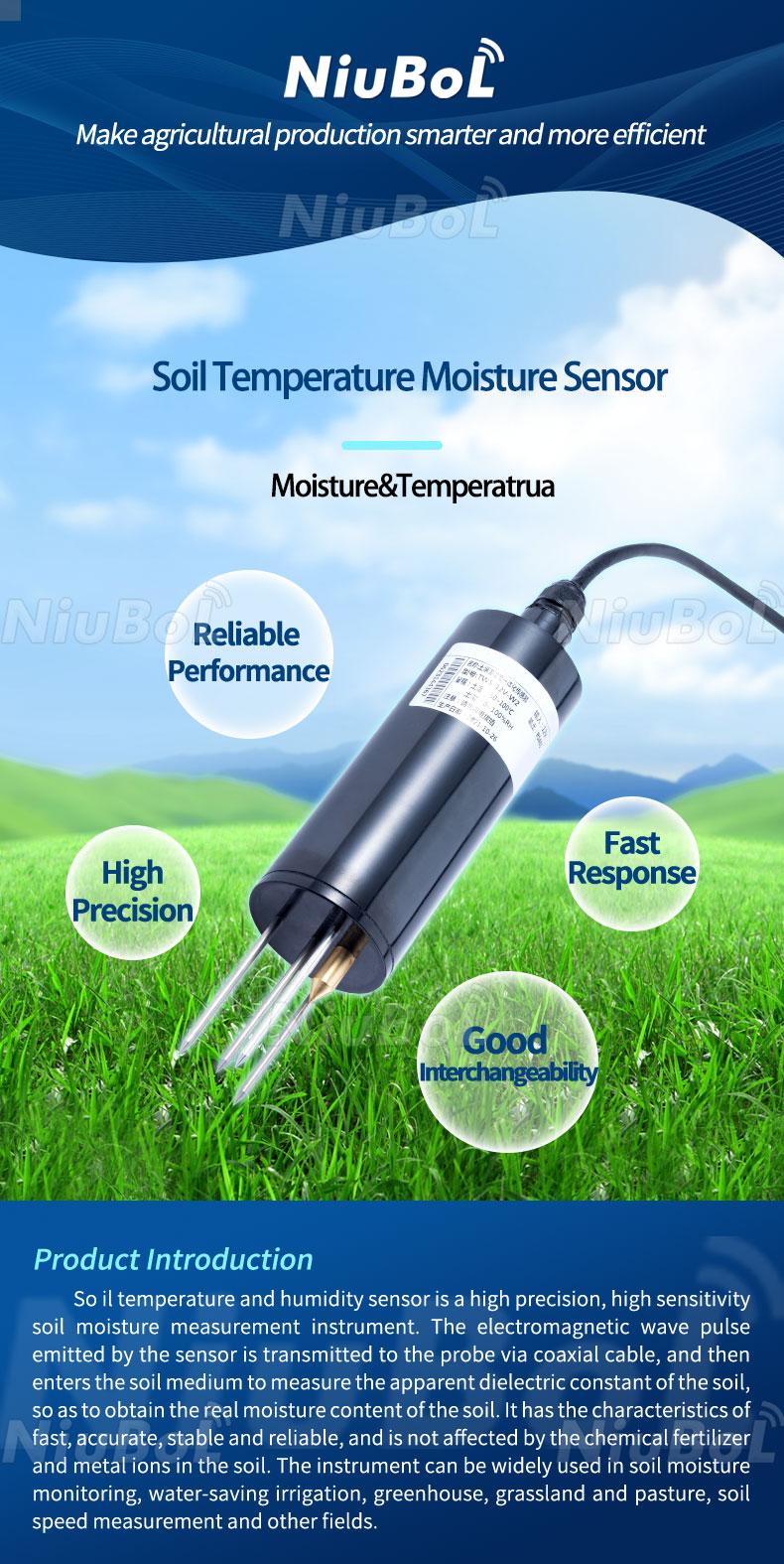
Soil moisture sensors are generally encapsulated in a PVC housing with epoxy resin. There are also plug-in soil temperature and moisture sensors that are capable of measuring both soil temperature and moisture and have multiple probes in order to measure temperature and moisture in soil at different depths.
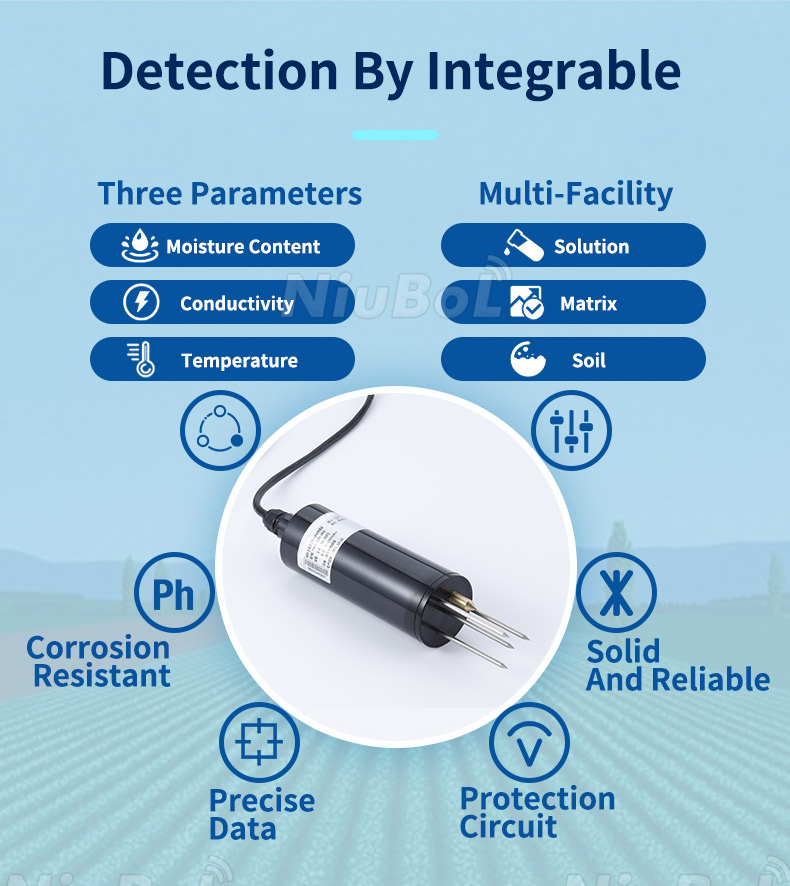
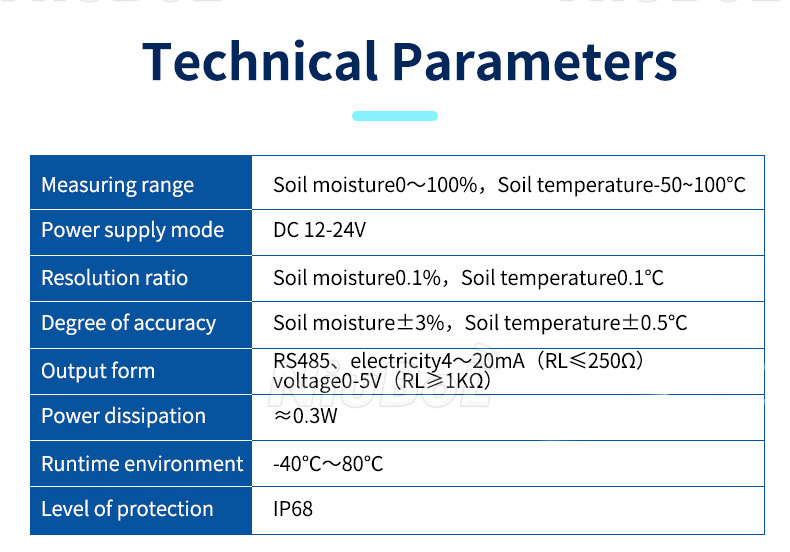
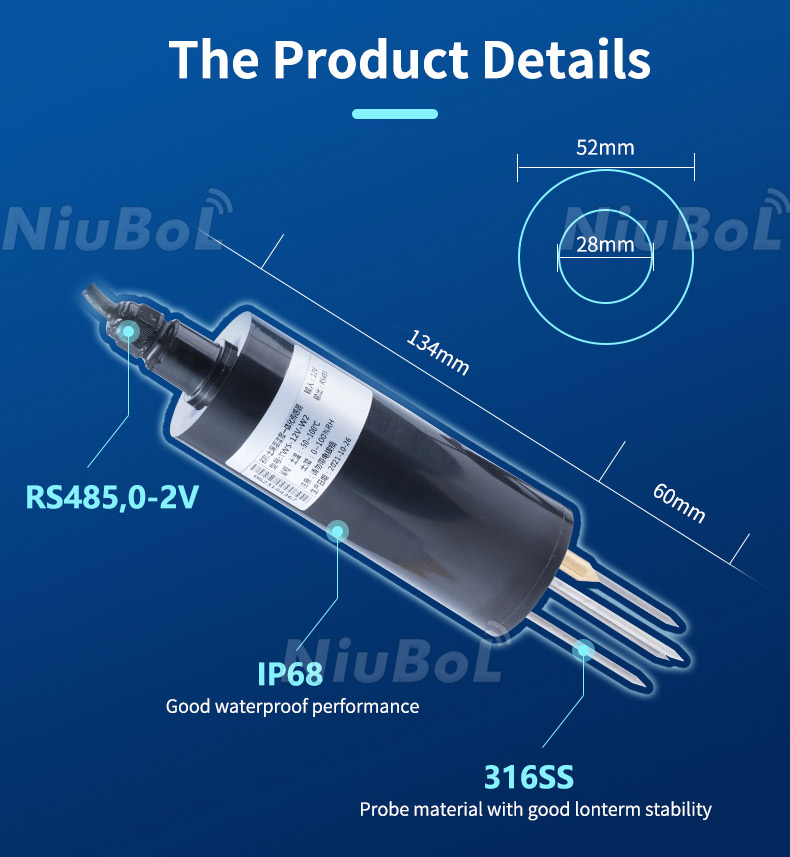
A soil moisture sensor is a device used to measure the moisture content in the soil, which is vital for fields such as agricultural irrigation, environmental monitoring, and scientific research. These sensors assess the moisture status of the soil through different technical principles, of which TDR (Time Domain Reflectance) and FDR (Frequency Domain Reflectance) are two common techniques.
TDR sensors utilize high-frequency electromagnetic pulses that travel along a metal wire buried in the soil. When the electromagnetic wave encounters the interface between the soil and air or a different medium, it is reflected. Since the dielectric constant of the soil is closely related to the moisture content, the propagation speed and reflection time of the electromagnetic wave will vary with the soil moisture.
By accurately measuring this time difference, the dielectric constant of the soil can be calculated, and thus the volumetric water content of the soil can be deduced.The advantages of TDR sensors lie in their high accuracy and independence of soil type and density, which makes them suitable for application scenarios that require high-precision measurements, even though they are relatively costly and complicated to install.
The FDR sensor is based on the difference in frequency response of electromagnetic waves in media with different dielectric constants. It sends an electromagnetic signal of a specific frequency and measures the change in resonant frequency of that signal in the soil. An increase in soil moisture leads to an increase in the dielectric constant, which in turn affects the resonant frequency.
By analyzing the change in frequency, the dielectric constant of the soil can be calculated and the soil moisture content can be obtained indirectly.FDR sensors offer lower cost and faster measurement speeds than TDRs, and the probe design is flexible enough to accommodate simultaneous measurements at multiple depths, making them suitable for applications that require a fast response and cost-effectiveness.
Modern soil moisture sensors are often also equipped with a temperature sensor and a humidity sensor to more accurately measure the temperature and humidity of the soil. This data can be used to control the operation of an irrigation system, allowing the farmer or horticultural enthusiast to better manage the growth and development of plants.
Soil Moisture Sensor has a wide range of applications in agriculture, horticulture and environmental monitoring. The following are some common application scenarios:
1. Agricultural irrigation: Soil moisture sensors can be used in farm irrigation systems to help farmers determine when to irrigate as well as the amount and frequency of irrigation. By monitoring soil moisture in real time, over- or under-irrigation can be avoided and crop yield and quality can be improved.
2. Horticultural management: In gardens, greenhouses or plant pots, soil moisture sensors can be used to monitor the moisture content of the soil around the plant's root system. This helps to determine when to water the plant and control the amount of watering to ensure that the plant is properly supplied with water to promote growth and flowering.
3. Soil research: Scientific researchers use soil moisture sensors to monitor moisture changes in different soil types and geographic locations. This is important for soil moisture distribution studies, irrigation optimization and ecosystem monitoring.
4. Forest management: In forest ecosystems, soil moisture sensors can be used to monitor changes in soil moisture to understand the moisture status of the forest ecosystem and changes in the ecosystem.
5. Environmental monitoring: soil moisture sensors can be used to monitor soil moisture in places such as urban parks, green spaces and nature reserves to assess the degree of soil drought, water utilization and the health of the ecosystem.
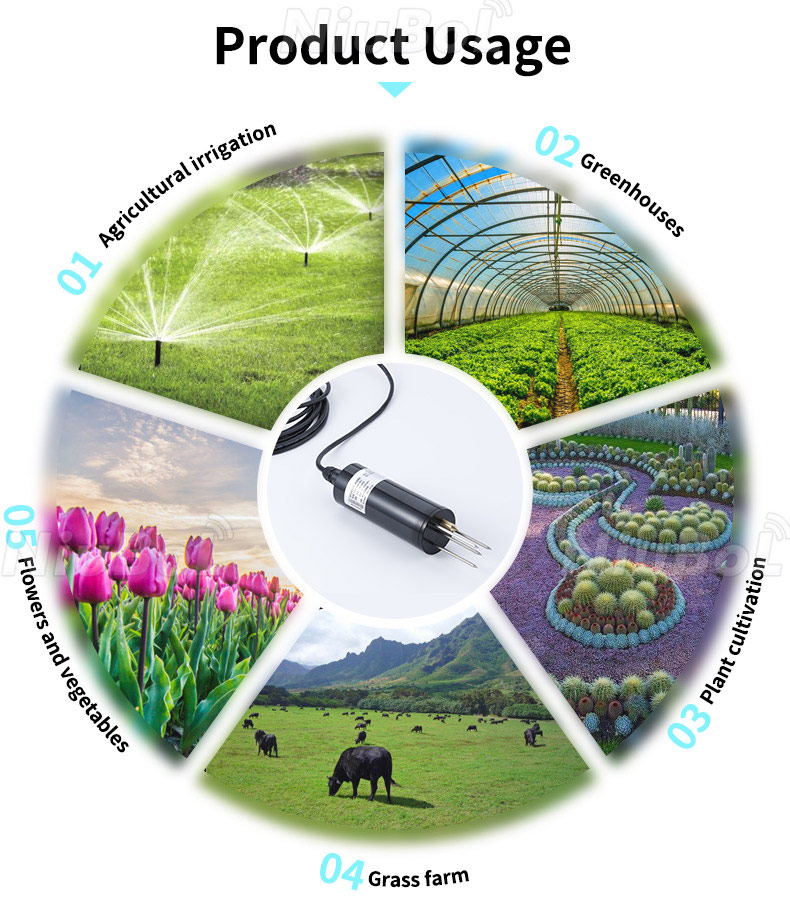
The value of Soil Moisture Sensor is mainly reflected in the following aspects:
1. Water management: Soil Moisture Sensor can help farmers and gardeners to accurately measure soil moisture to avoid over- or under-irrigation problems. By monitoring soil moisture in real time, the amount and frequency of irrigation can be adjusted according to the actual demand, improving the utilization efficiency of water resources and reducing water waste.
2. Improve crop yield and quality: Proper soil moisture is necessary for the normal growth and development of crops. Soil moisture sensors can help determine the optimal time and amount of irrigation to ensure that the soil around the root system of crops is properly supplied with water, thus promoting plant growth and development, and improving yield and quality.
3. Saving energy costs: By using soil moisture sensors, soil moisture can be accurately measured and irrigation can be controlled based on actual needs. This avoids unnecessary irrigation and saves water consumption, while also reducing energy costs associated with irrigation, such as pump station operation and water supply system energy consumption.
4. Environmental protection: The rational use of soil moisture sensors can avoid soil erosion and water pollution caused by over-irrigation. Reducing unnecessary water utilization helps protect the environment and maintain ecological balance.
5. Scientific research and decision support: soil moisture sensors provide real-time data can be used for soil moisture distribution research and monitoring, to help scientists understand the pattern of change of soil moisture, predict the risk of natural disasters such as droughts or floods, and to provide a scientific basis for decision-making in agricultural production, water resource management and ecological environmental protection.
In summary, soil moisture sensors have an important role in water resource management, agricultural production, energy conservation and environmental protection and other aspects of value, help to improve crop yield and quality, optimize the use of water resources, reduce energy consumption, protect the ecological environment, and provide support for scientific research and decision-making.
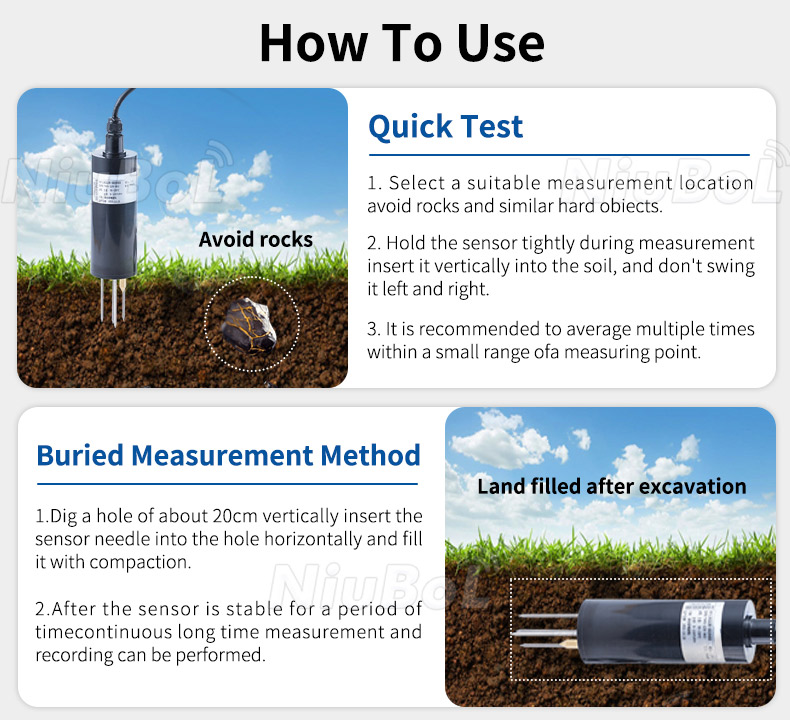
1. Selection of installation location: When installing the Soil Moisture Sensor, a well-represented piece of land should be selected, and try to avoid installing it in a place where there are water sources and drainage facilities. It is also necessary to consider the distance between the sensor and the irrigation pipe, root system, etc. to ensure that the moisture content measured by the sensor is representative.
2. Control of installation depth: The installation depth of the soil moisture sensor is critical to the accuracy of the measurement results. Generally speaking, the appropriate installation depth is selected according to the growth of crops and the depth of the root system. Usually, the sensor is installed near the soil centerline at a depth of about 20-30 cm.
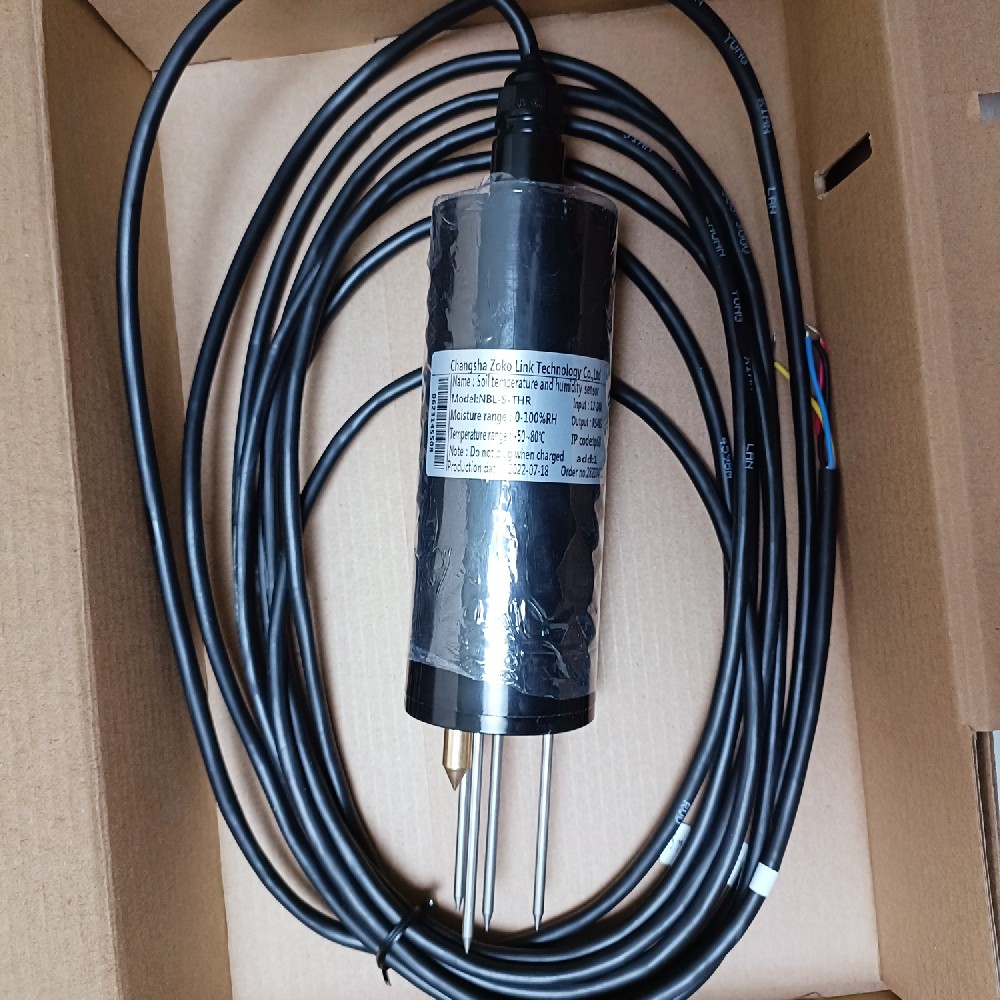
3. Selection of installation method: There are various installation methods for soil moisture sensors, including insertion type, buried type and placement type. Different installation methods are suitable for different soil types and practical needs. Before installation, you should read the instruction manual carefully and choose the suitable installation method.
4. Preventing contamination and damage: When installing soil moisture sensors, care should be taken to prevent the sensors from various forms of contamination and damage. For example, in the plug-in sensor, the plug and cable and other parts should be buried in the soil to avoid erosion by wind and rain. In the course of use, the surface of the sensor should be cleaned in time and the sensor should be prevented from being chewed by animals or man-made damage.
5. Maintenance: Regularly check the operating status of the soil moisture sensor, if any abnormalities should be dealt with in a timely manner. Also pay attention to the protection and maintenance of the sensor cable to avoid cable aging due to long-term exposure to the sun.
6. Data Acquisition and Processing: After soil moisture measurement, it is necessary to collect data for statistics and analysis. When carrying out data processing, attention should be paid to selecting the appropriate data processing method according to the actual needs, in order to better understand the changing law of soil moisture content.
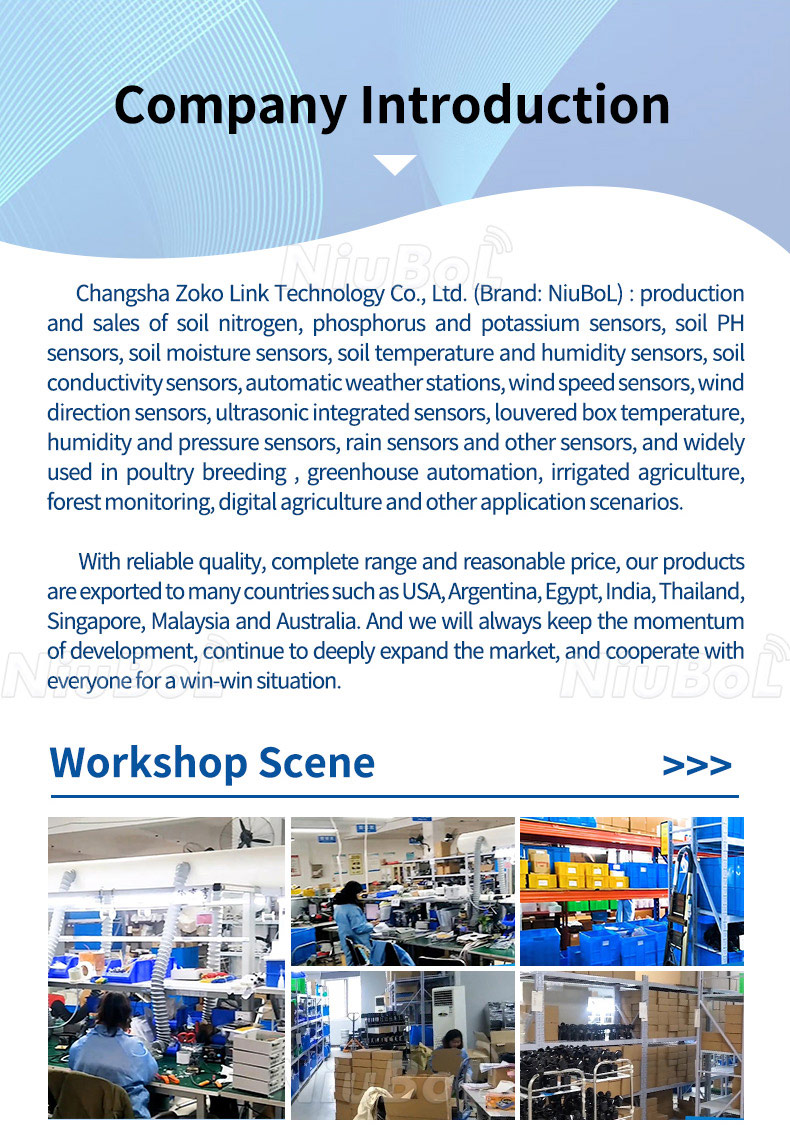
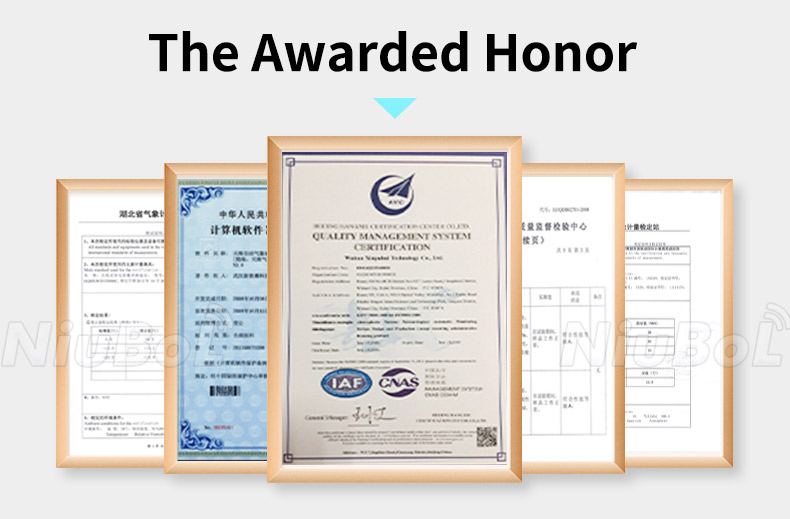
In summary, the installation of soil moisture sensors need to pay attention to a number of aspects, including the installation location, installation depth, installation method, anti-pollution and damage, maintenance, and data acquisition and processing. Only under the premise of following the correct installation methods and precautions can accurate and reliable soil moisture measurement results be obtained.
NBL-S-THR-Soil-temperature-and-moisture-sensors-Instruction-Manual-V4.0.pdf
NBL-S-TMC-Soil-temperature-and-moisture-conductivity-sensor.pdf
NBL-S-TMCS-Soil-temperature-humidity-salty-EC-sensor.pdf
Next:Soil ph sensor
Sensors & Weather Stations Catalog
Agriculture Sensors and Weather Stations Catalog-NiuBoL.pdf
Weather Stations Catalog-NiuBoL.pdf
Related recommendations
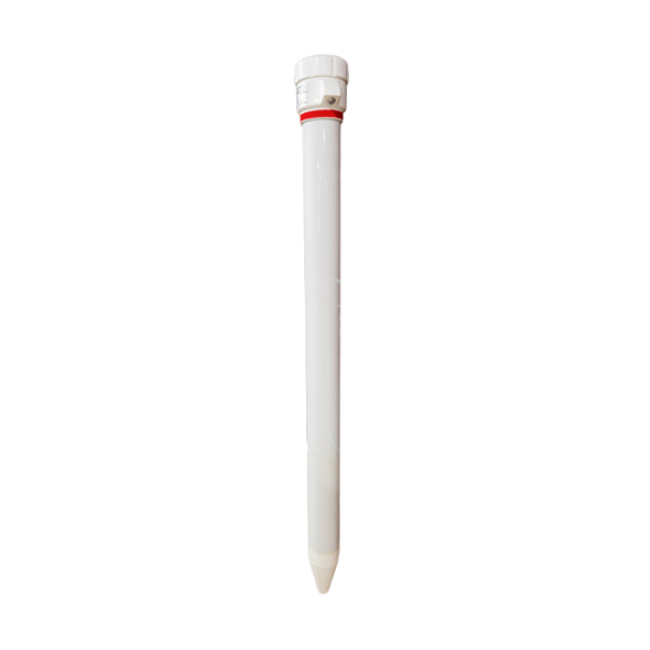 Multi-Depth Soil Sensor RS485
Multi-Depth Soil Sensor RS485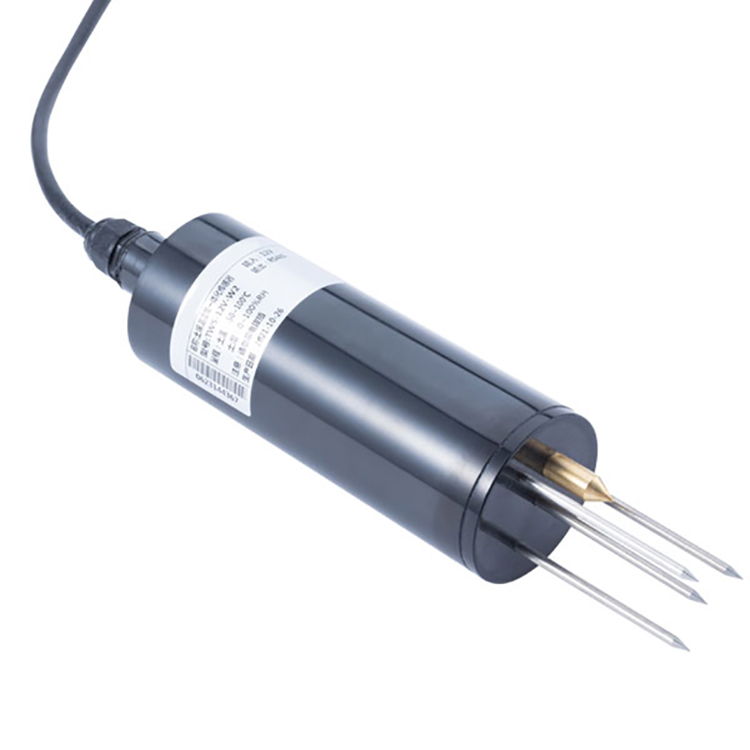 TDR Soil Moisture Sensor
TDR Soil Moisture Sensor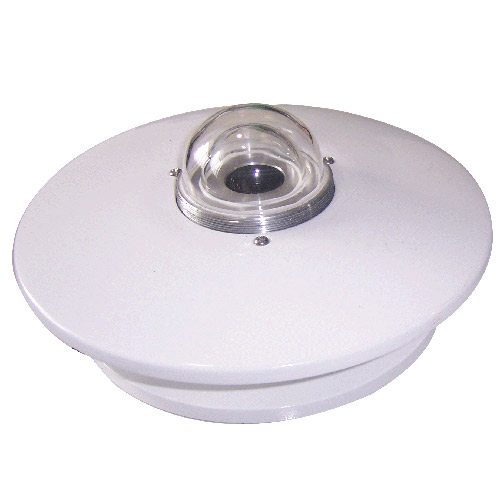 Pyranometer Solar Radiation Sensors
Pyranometer Solar Radiation Sensors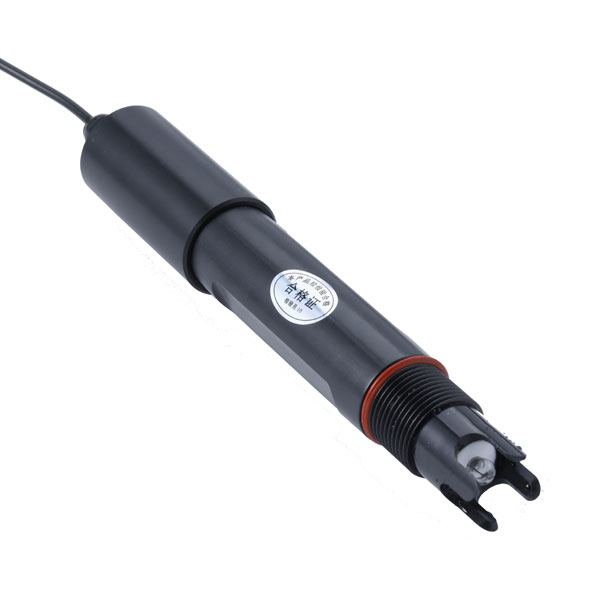 Soil ph sensor
Soil ph sensor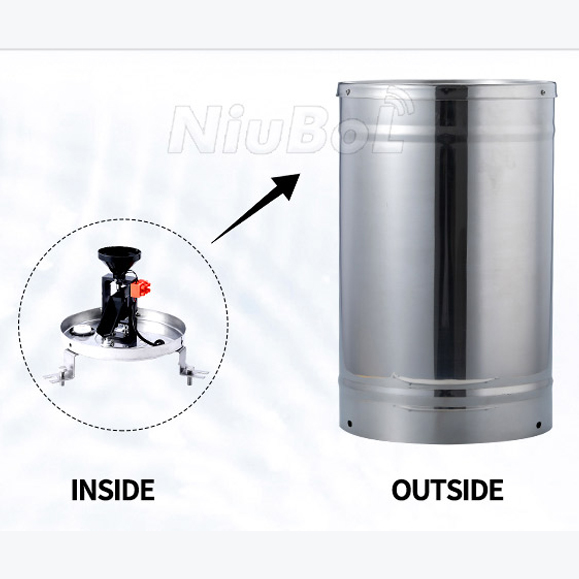 Tipping Bucket Rain Gauge
Tipping Bucket Rain Gauge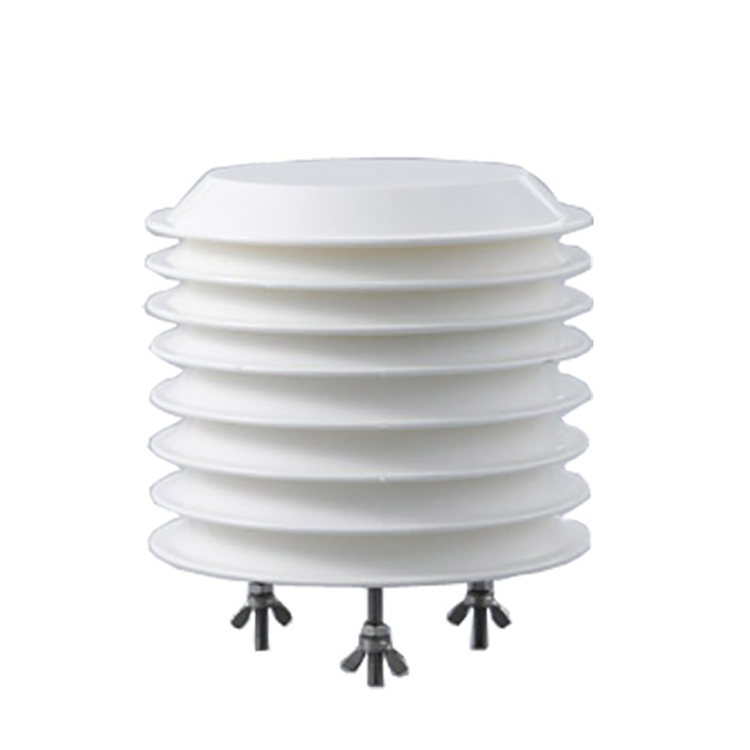 Air Temperature and Humidity Sensor
Air Temperature and Humidity Sensor
Screenshot, WhatsApp to identify the QR code
WhatsApp number:+8615367865107
(Click on WhatsApp to copy and add friends)
